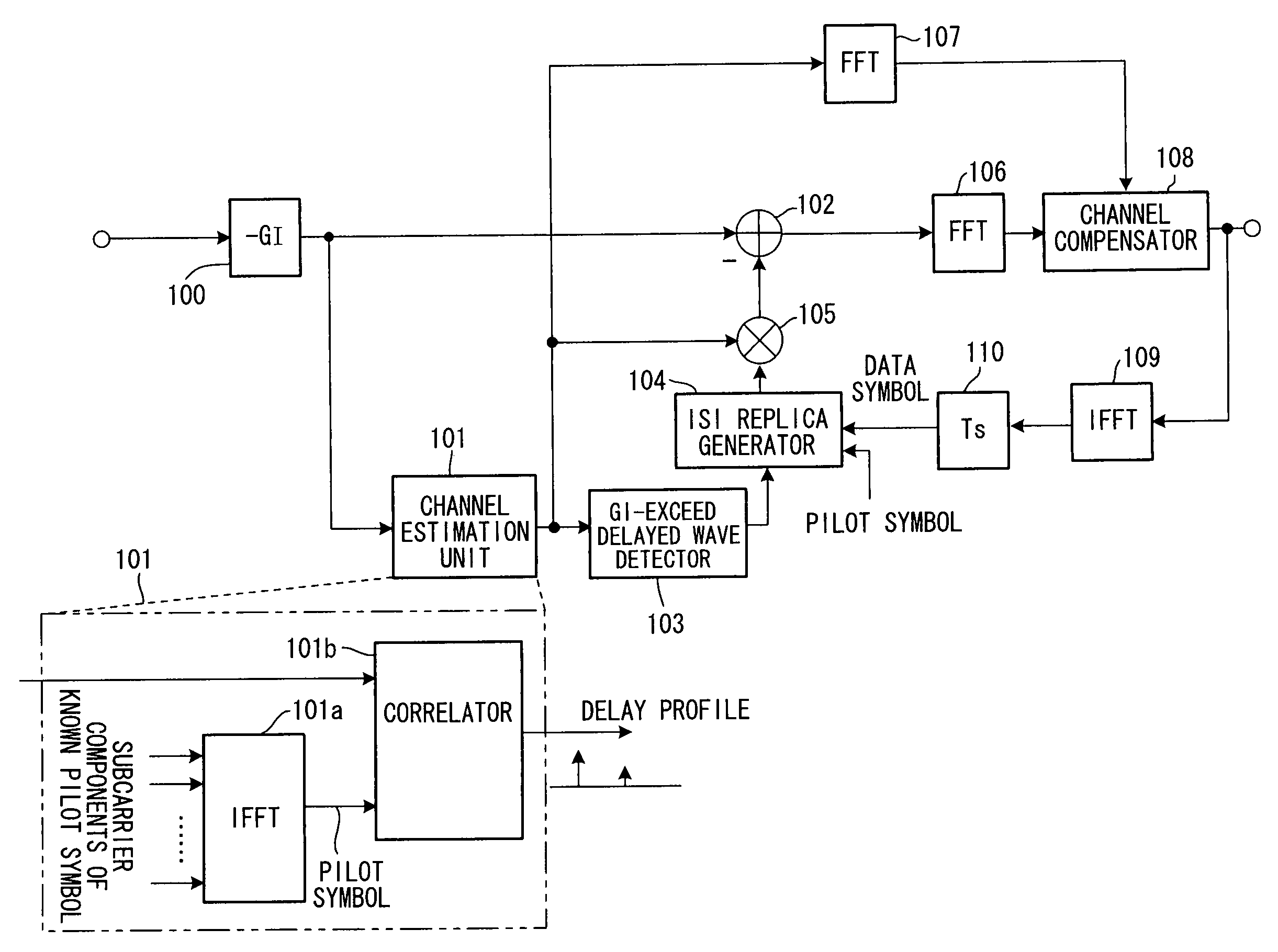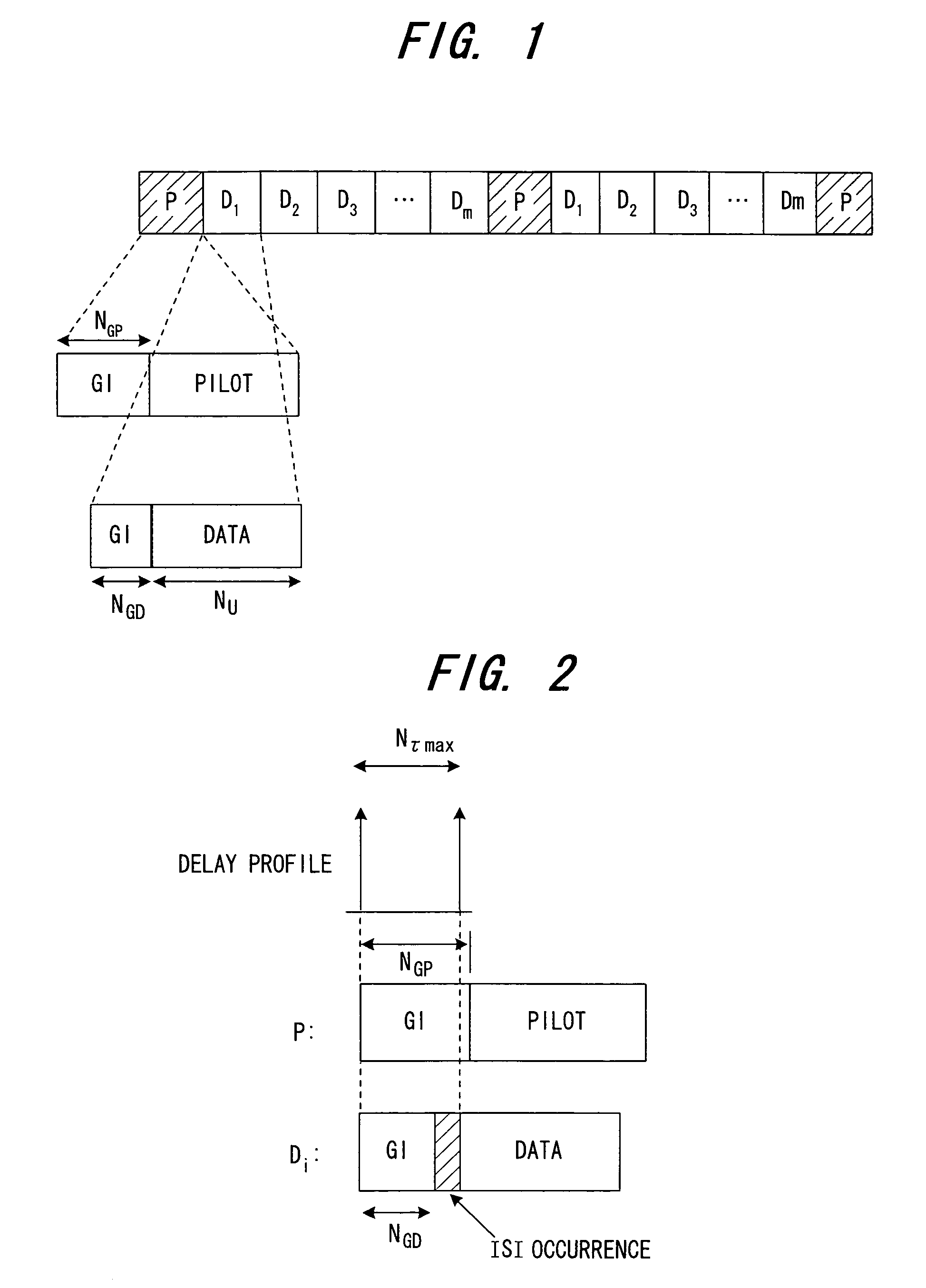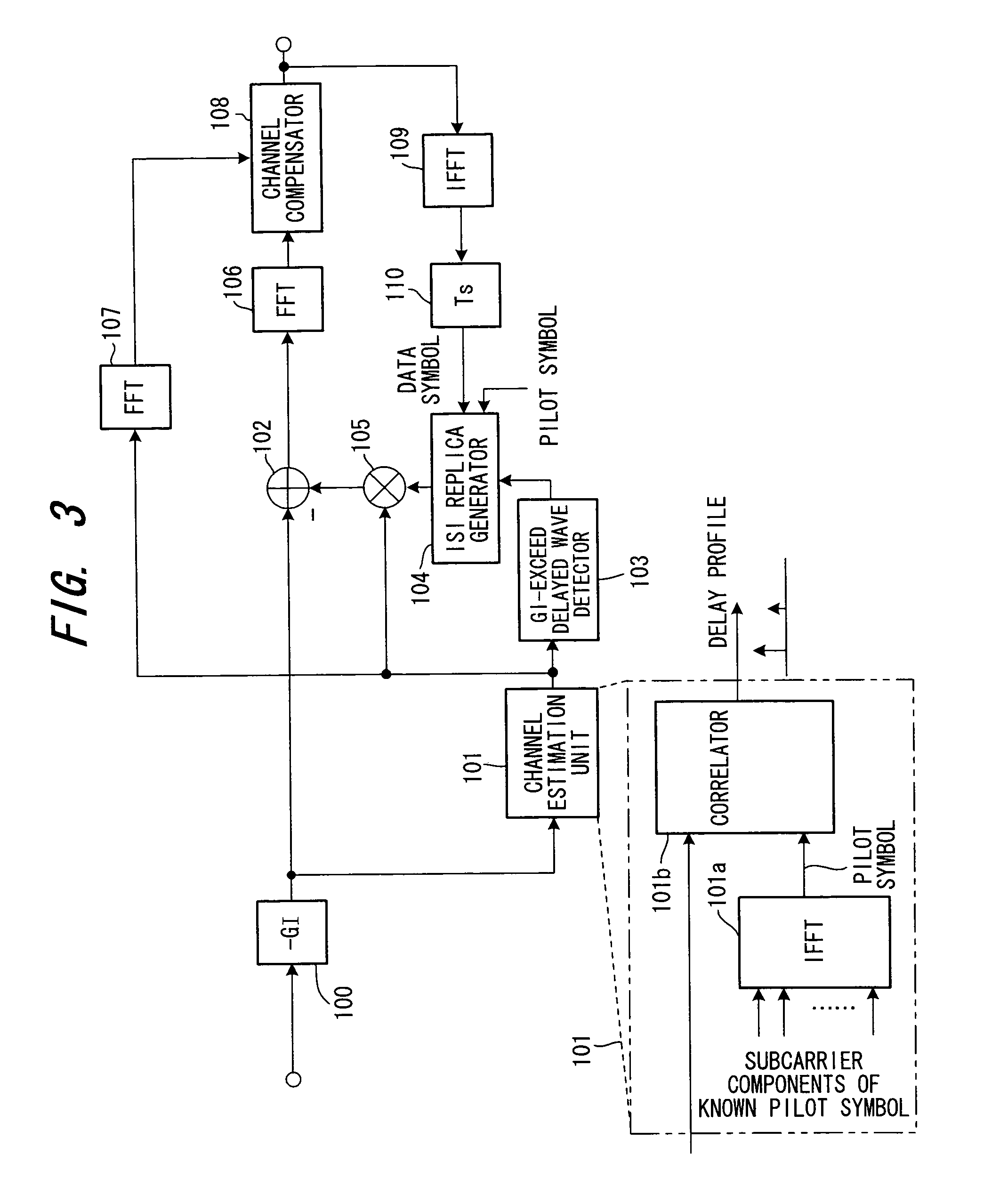Receiving apparatus in OFDM transmission system
a transmission system and receiving apparatus technology, applied in the field of receiving apparatus in an orthogonal frequency division multiplexing (ofdm) transmission system, can solve the problems of reducing the ratio of peak-to-average power, reducing the performance of fading tracking, and increasing the symbol length
- Summary
- Abstract
- Description
- Claims
- Application Information
AI Technical Summary
Benefits of technology
Problems solved by technology
Method used
Image
Examples
first embodiment
(B) First Embodiment
[0099]FIG. 3 is a block diagram illustrating a receiving apparatus in an OFDM transmission system according to a first embodiment of the present invention. In this embodiment and in the embodiments that follow it, signal processing in a time domain is executed before FFT processing, processing in a frequency domain is executed after FFT processing, and processing in the time domain is executed after IFFT processing. The first embodiment illustrates a case where channel estimation / measurement of delay profile using a receive signal (i.e., time waveform) prior to FFT processing on the receiving side is carried out.
[0100]A receiving unit (see the radio receiver 11 and quadrature demodulator 12 in FIG. 54) inputs the receive signal to a guard-interval removal unit 100. It should be noted that the guard-interval length NGP added onto the pilot symbol P is greater than the guard-interval length NGD added onto the data symbol Di (NGP>NGD)
[0101]The guard-interval removal...
second embodiment
(C) Second Embodiment
[0115]FIG. 9 is a block diagram illustrating a receiving apparatus according to a second embodiment. Whereas the first embodiment suppresses only ISI, the second embodiment simultaneously suppresses ICI in addition to ISI.
[0116]FIGS. 10A to 10F are diagrams useful in describing the principle of ICI suppression. In the first embodiment, the receive signal shown in FIG. 10B is subjected to FFT processing upon eliminating the the ISI segment y of the delayed wave B shown in FIG. 10A in order to remove ISI.
[0117]However, the delayed wave B is discontinuous at the portion corresponding to the ISI segment y and, moreover, is not a periodic waveform. As a consequence, each subcarrier component obtained by FFT processing includes distortion ascribable to ICI. In order to eliminate such ICI, it will suffice to insert a waveform that will make the delayed wave B smooth over the span of the ISI segment y and periodic as well, as indicated by the dashed line in FIG. 10C.
[01...
third embodiment
(D) Third Embodiment
[0125]The second embodiment suppresses ISI and ICI simultaneously. That is, as shown in FIG. 10D, the receive signal of FIG. 10B is subjected to FFT processing, after which a continuous-signal waveform is obtained, as shown in FIG. 10E, if IFFT processing is applied. The tail-end segment y of the continuous-waveform signal of FIG. 10E is cut out and inserted into the segment y at the front end of the receive delayed signal of FIG. 10B, thereby making the delayed wave B a continuous periodic waveform, as shown in FIG. 10F, then the signal of FIG. 10F is subjected to FFT processing to suppress ICI.
[0126]In the second embodiment, as set forth above, only the segment y at the front end of the delayed wave B is replaced with the replica signal; the ISI portion of the desired wave (direct wave) A is not replaced with a replica signal. The segment y at the front end of the desired wave (direct wave) A undergoes fading and picks up noise, as a result of which quality dec...
PUM
 Login to View More
Login to View More Abstract
Description
Claims
Application Information
 Login to View More
Login to View More - R&D
- Intellectual Property
- Life Sciences
- Materials
- Tech Scout
- Unparalleled Data Quality
- Higher Quality Content
- 60% Fewer Hallucinations
Browse by: Latest US Patents, China's latest patents, Technical Efficacy Thesaurus, Application Domain, Technology Topic, Popular Technical Reports.
© 2025 PatSnap. All rights reserved.Legal|Privacy policy|Modern Slavery Act Transparency Statement|Sitemap|About US| Contact US: help@patsnap.com



